Easy Grow Grape Tomatoes: Imagine plucking juicy, sun-ripened grape tomatoes straight from your own backyard, bursting with flavor far superior to anything you’d find in a grocery store. Sounds idyllic, right? Well, it’s more achievable than you think! For centuries, cultivating your own food has been a source of sustenance and pride. From ancient Roman gardens to the victory gardens of World War II, growing your own produce connects you to a rich history of self-sufficiency and a deeper appreciation for the food we eat.
But let’s be honest, not everyone has a green thumb, and the thought of starting a garden can be daunting. That’s where these simple, yet effective, DIY tricks and hacks come in. I’m here to show you that growing delicious easy grow grape tomatoes is not only possible, but also incredibly rewarding, even if you’re a complete beginner.
In this article, I’ll share my favorite tips and tricks for cultivating thriving grape tomato plants, from choosing the right soil to warding off pests naturally. You’ll learn how to maximize your yield, even in small spaces, and enjoy a bountiful harvest of sweet, bite-sized tomatoes all season long. So, ditch the store-bought varieties and get ready to experience the joy of growing your own! Let’s get started!
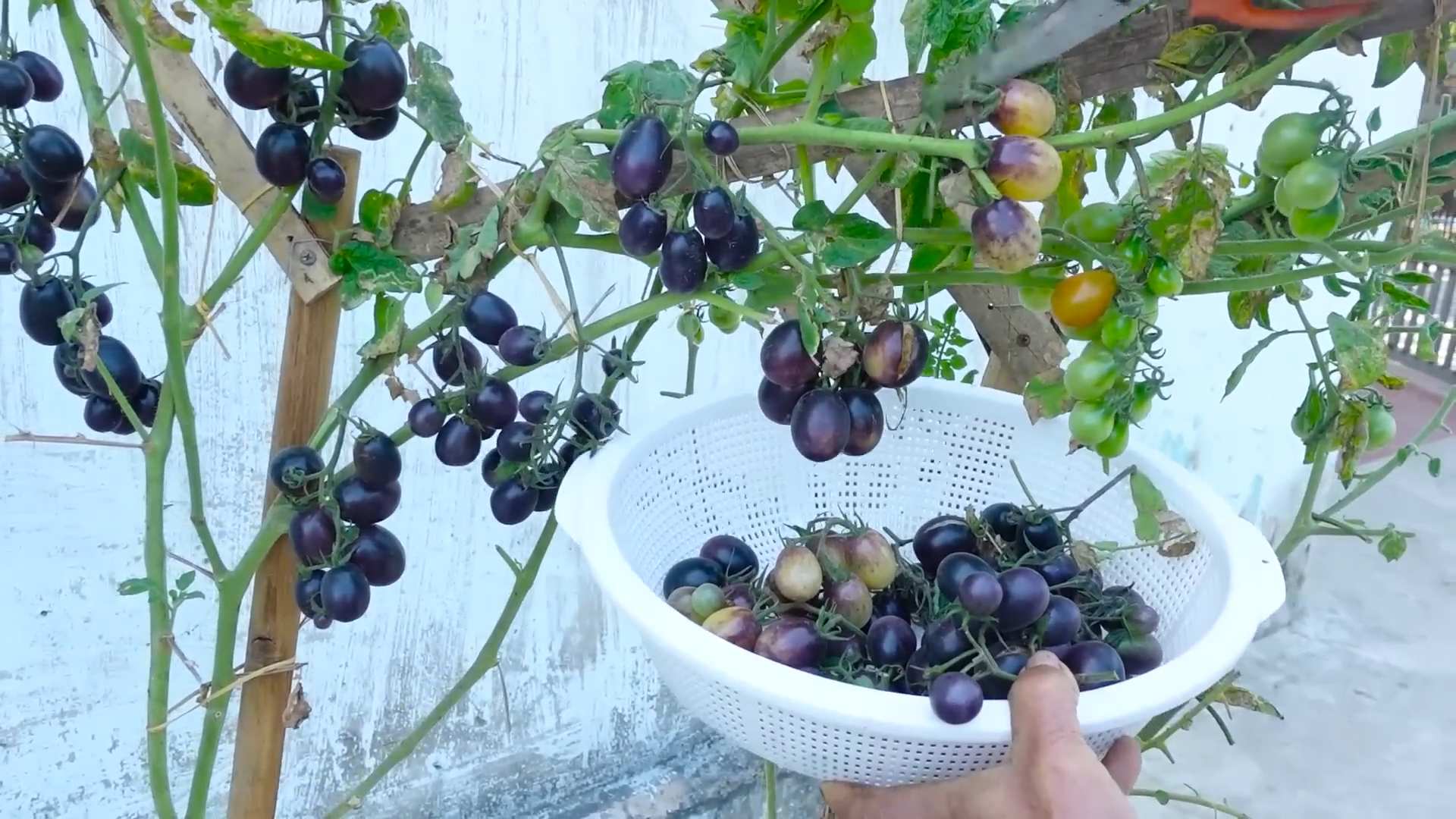
Easy Grow Grape Tomatoes: From Seed to Snack in Your Own Backyard!
Okay, so you want to grow your own delicious, juicy grape tomatoes? Awesome! I’m here to tell you it’s totally doable, even if you don’t have a sprawling garden. We’re going to focus on making it as easy and rewarding as possible. Get ready for a summer (or longer, depending on your climate!) filled with fresh, homegrown goodness.
Choosing Your Method: Starting Seeds vs. Buying Seedlings
Before we dive into the nitty-gritty, let’s talk about how you want to start your tomato adventure. You have two main options: starting from seeds or buying seedlings.
* **Starting from Seeds:** This is the more economical option and gives you a wider variety of grape tomato types to choose from. It also gives you a head start on the growing season, especially if you live in a cooler climate. However, it requires a bit more time and effort.
* **Buying Seedlings:** This is the easier and faster option. You can find healthy seedlings at most garden centers. It’s perfect if you’re short on time or just want to get growing quickly.
For this guide, I’ll cover both methods, so you can choose what works best for you!
Section 1: Starting from Seeds (The Patient Gardener’s Path)
If you’re going the seed route, here’s what you’ll need:
* **Grape Tomato Seeds:** Choose a variety you love! There are tons of options, from classic red grape tomatoes to yellow or even black varieties.
* **Seed Starting Trays or Small Pots:** These should have drainage holes.
* **Seed Starting Mix:** This is a light, sterile soil mix specifically designed for starting seeds. Don’t use regular garden soil!
* **Spray Bottle:** For gentle watering.
* **Heat Mat (Optional but Recommended):** Tomato seeds germinate best with warmth.
* **Grow Light (Optional but Recommended):** Provides consistent light for healthy seedlings.
* **Clear Plastic Dome or Plastic Wrap:** To create a humid environment.
Step-by-Step Seed Starting:
1. **Sow Your Seeds:** Fill your seed starting trays or pots with seed starting mix. Gently press the soil down. Sow 2-3 seeds per cell or pot, about 1/4 inch deep.
2. **Water Gently:** Use your spray bottle to moisten the soil. You want it damp, but not soggy.
3. **Create a Humid Environment:** Cover the trays or pots with a clear plastic dome or plastic wrap. This helps retain moisture and warmth.
4. **Provide Warmth:** Place the trays or pots on a heat mat, if you’re using one. The ideal temperature for germination is around 75-85°F (24-29°C).
5. **Provide Light:** If you’re using a grow light, place it a few inches above the trays or pots. If not, place them in a warm, sunny location.
6. **Monitor and Water:** Check the soil moisture daily. Keep it consistently moist, but not waterlogged. Remove the plastic dome or wrap for a few hours each day to allow for air circulation and prevent fungal growth.
7. **Wait for Germination:** Tomato seeds typically germinate in 5-10 days.
8. **Thin Seedlings:** Once the seedlings have emerged and have their first true leaves (the second set of leaves that appear after the initial seed leaves), thin them to one seedling per cell or pot. Choose the strongest, healthiest-looking seedling and gently snip off the others at the soil line. Don’t pull them out, as this can disturb the roots of the remaining seedling.
9. **Harden Off Seedlings:** About a week before you plan to transplant your seedlings outdoors, you’ll need to “harden them off.” This means gradually exposing them to outdoor conditions to acclimate them to the sun, wind, and temperature changes. Start by placing them outdoors in a sheltered location for an hour or two each day, gradually increasing the amount of time they spend outside.
Section 2: Planting Seedlings (Whether You Started Them or Bought Them)
Okay, your seedlings are ready to go into the ground (or a container!). Here’s what you’ll need:
* **Healthy Tomato Seedlings:** Choose seedlings that are about 6-8 inches tall, with thick stems and healthy green leaves. Avoid seedlings that are leggy (tall and spindly) or have yellowing leaves.
* **Garden Space or Large Containers:** Grape tomatoes need plenty of sunlight and well-drained soil. If you’re planting in the ground, choose a location that gets at least 6-8 hours of sunlight per day. If you’re planting in containers, make sure they’re at least 12 inches in diameter and have drainage holes.
* **Good Quality Potting Mix (for containers) or Compost (for in-ground planting):** Tomato plants are heavy feeders and need nutrient-rich soil.
* **Tomato Cages or Stakes:** Grape tomatoes can get quite tall and bushy, so they’ll need support.
* **Gardening Gloves:** To protect your hands.
* **Hand Trowel or Shovel:** For digging holes.
* **Watering Can or Hose:** For watering your plants.
* **Slow-Release Fertilizer (Optional):** Provides a steady supply of nutrients.
Step-by-Step Planting:
1. **Prepare the Soil:** If you’re planting in the ground, amend the soil with compost to improve drainage and fertility. If you’re planting in containers, fill them with a good quality potting mix.
2. **Dig Holes:** Dig holes that are slightly larger than the root balls of your seedlings. Space the holes about 2-3 feet apart if planting in the ground, or one seedling per container.
3. **Plant the Seedlings:** Gently remove the seedlings from their containers. If the roots are tightly bound, gently loosen them with your fingers. Place the seedlings in the holes, making sure the top of the root ball is level with the surrounding soil.
4. **Bury the Stem (Important!):** This is a trick that many people don’t know! Tomato plants can grow roots from their stems, so burying a portion of the stem will encourage stronger root growth and a healthier plant. Remove the lower leaves from the seedling and bury the stem up to the first set of leaves.
5. **Backfill the Holes:** Fill the holes with soil, gently firming it around the seedlings.
6. **Water Thoroughly:** Water the seedlings thoroughly after planting.
7. **Add Support:** Install tomato cages or stakes around the seedlings to provide support as they grow.
8. **Fertilize (Optional):** If you’re using a slow-release fertilizer, sprinkle it around the base of the plants according to the package directions.
Section 3: Caring for Your Grape Tomato Plants
Now that your plants are in the ground (or containers), it’s time to give them the TLC they need to thrive.
* **Watering:** Water your tomato plants regularly, especially during hot, dry weather. Aim to water deeply and less frequently, rather than shallowly and often. Water at the base of the plants to avoid wetting the foliage, which can lead to fungal diseases.
* **Fertilizing:** Tomato plants are heavy feeders and need regular fertilization. Use a balanced fertilizer specifically formulated for tomatoes, following the package directions. You can also side-dress your plants with compost or aged manure.
* **Pruning:** Pruning tomato plants can help improve air circulation, reduce disease, and encourage fruit production. Remove suckers (the small shoots that grow between the main stem and the branches) regularly. You can also remove yellowing or diseased leaves.
* **Pest and Disease Control:** Keep an eye out for common tomato pests and diseases, such as aphids, whiteflies, tomato hornworms, and early blight. Treat any problems promptly with appropriate organic or chemical controls.
* **Mulching:** Mulching around your tomato plants can help retain moisture, suppress weeds, and regulate soil temperature. Use organic mulches such as straw, hay, or wood chips.
* **Sunlight:** Ensure your plants get at least 6-8 hours of sunlight per day. If you’re growing in containers, you may need to move them to a sunnier location as the season progresses.
* **Pollination:** While tomatoes are self-pollinating, you can help them along by gently shaking the plants or using a small brush to transfer pollen from one flower to another. This is especially important if you’re growing indoors or in a greenhouse.
Section 4: Harvesting Your Bountiful Crop
This is the best part! After all your hard work, it’s time to enjoy the fruits (or vegetables!) of your labor.
* **When to Harvest:** Grape tomatoes are ready to harvest when they are fully colored and slightly soft to the touch. They should easily detach from the vine.
* **How to Harvest:** Gently twist or snip the tomatoes from the vine.
* **Storage:** Fresh
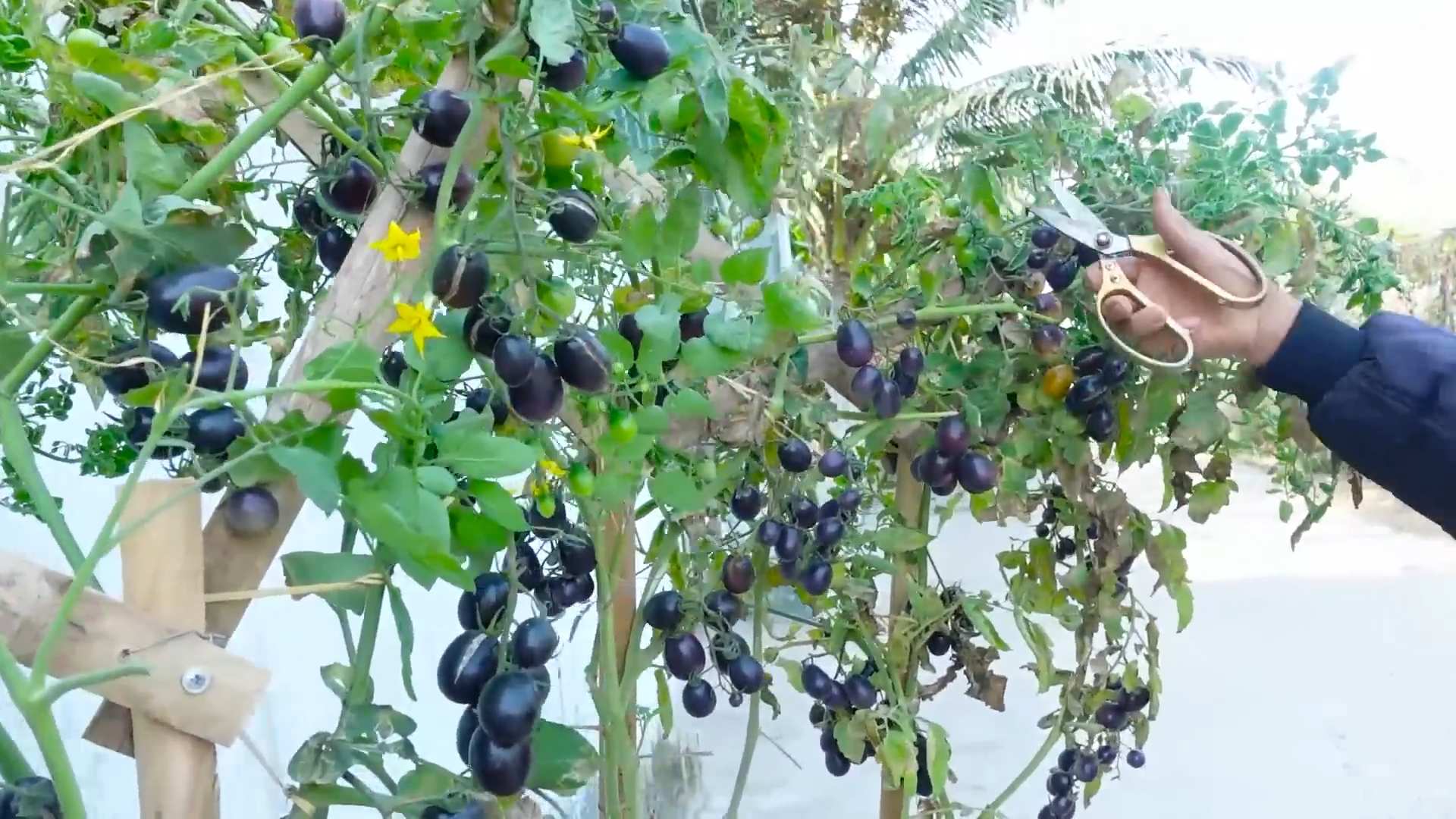
Conclusion
So, there you have it! Transforming your gardening game with this easy grow grape tomatoes DIY trick is more than just a fun project; it’s a gateway to a bountiful harvest of sweet, juicy grape tomatoes right at your fingertips. We’ve walked you through the simple steps, highlighting how accessible and cost-effective this method truly is. Forget expensive gardening equipment or complicated techniques. This approach is designed for everyone, from seasoned gardeners to absolute beginners.
The beauty of this DIY method lies not only in its simplicity but also in its adaptability. Feel free to experiment with different types of containers. Upcycle old buckets, repurpose plastic bins, or even get creative with fabric grow bags. The key is ensuring adequate drainage and sufficient space for your tomato plants to thrive. Consider companion planting to further enhance your tomato growth. Basil, marigolds, and carrots are excellent choices that can deter pests and improve the overall health of your tomato plants.
Don’t be afraid to tweak the soil mixture to suit your local climate and soil conditions. If you live in an area with heavy clay soil, adding more perlite or vermiculite will improve drainage and aeration. Conversely, if your soil is sandy and drains too quickly, incorporating compost or peat moss will help retain moisture.
Remember, gardening is a journey of learning and discovery. There will be successes and perhaps a few minor setbacks along the way. But with each attempt, you’ll gain valuable experience and a deeper understanding of what works best for your specific environment.
This easy grow grape tomatoes method is a game-changer because it empowers you to take control of your food source, reduce your reliance on store-bought produce, and enjoy the unparalleled satisfaction of harvesting your own homegrown tomatoes. Imagine the delicious salads, sauces, and snacks you can create with your freshly picked bounty.
We are confident that once you try this DIY trick, you’ll be amazed by the results. The vibrant color, the intense flavor, and the sheer abundance of grape tomatoes will undoubtedly impress you. So, gather your supplies, follow our simple instructions, and get ready to embark on a rewarding gardening adventure.
We wholeheartedly encourage you to try this easy grow grape tomatoes method and share your experiences with us. Post photos of your tomato plants, share your tips and tricks, and let us know how this DIY project has transformed your gardening endeavors. Your feedback is invaluable and will help us refine and improve this method for future gardeners. Let’s create a community of passionate tomato growers who are dedicated to sharing their knowledge and inspiring others to embrace the joys of homegrown produce. Happy gardening!
Frequently Asked Questions (FAQ)
What kind of soil is best for growing grape tomatoes?
The ideal soil for grape tomatoes is a well-draining, nutrient-rich mix. A combination of potting soil, compost, and perlite or vermiculite works wonders. The potting soil provides a good base, the compost adds essential nutrients, and the perlite or vermiculite improves drainage and aeration. Avoid using garden soil directly in containers, as it can become compacted and hinder root growth. A slightly acidic to neutral pH (around 6.0 to 7.0) is also preferred. You can test your soil’s pH using a simple soil testing kit available at most garden centers. If your soil is too acidic, you can amend it with lime. If it’s too alkaline, you can add sulfur.
How often should I water my grape tomato plants?
Watering frequency depends on several factors, including the weather, the size of your container, and the type of soil you’re using. Generally, you should water your grape tomato plants deeply whenever the top inch of soil feels dry to the touch. During hot, sunny weather, you may need to water them daily. In cooler, cloudier weather, you may only need to water them every few days. Avoid overwatering, as this can lead to root rot. Ensure your containers have adequate drainage holes to prevent water from accumulating at the bottom. A good rule of thumb is to water until you see water draining out of the bottom of the container.
How much sunlight do grape tomato plants need?
Grape tomato plants thrive in full sun, which means they need at least 6-8 hours of direct sunlight per day. Choose a location in your garden or on your patio that receives ample sunlight throughout the day. If you’re growing your tomatoes indoors, you may need to supplement with grow lights to ensure they receive enough light. Insufficient sunlight can result in leggy growth, reduced fruit production, and overall weaker plants. Rotate your plants regularly to ensure all sides receive equal exposure to sunlight.
Do I need to fertilize my grape tomato plants?
Yes, grape tomato plants are heavy feeders and require regular fertilization to produce a bountiful harvest. Start fertilizing your plants about two weeks after transplanting them into their final containers. Use a balanced fertilizer with an NPK ratio (nitrogen, phosphorus, potassium) of around 10-10-10 or 14-14-14. Follow the instructions on the fertilizer package carefully. You can also use organic fertilizers, such as compost tea or fish emulsion. Fertilize your plants every 2-3 weeks throughout the growing season. As your plants begin to set fruit, you can switch to a fertilizer that is higher in phosphorus and potassium to promote fruit development.
How do I prevent pests and diseases from affecting my grape tomato plants?
Prevention is key when it comes to pests and diseases. Start by choosing disease-resistant varieties of grape tomatoes. Ensure your plants have good air circulation to prevent fungal diseases. Water your plants at the base to avoid wetting the foliage, which can also promote fungal growth. Regularly inspect your plants for signs of pests, such as aphids, whiteflies, or tomato hornworms. If you spot any pests, treat them promptly with insecticidal soap or neem oil. You can also use companion planting to deter pests. Basil, marigolds, and nasturtiums are all excellent companion plants for tomatoes. Remove any diseased or damaged leaves immediately to prevent the spread of infection.
How do I prune my grape tomato plants?
Pruning grape tomato plants can improve air circulation, promote fruit production, and prevent the plants from becoming too overgrown. Remove any suckers that grow between the main stem and the branches. These suckers will drain energy from the plant and reduce fruit production. Also, remove any yellowing or diseased leaves. As the plants grow taller, you may need to prune the lower branches to prevent them from touching the ground. Use clean, sharp pruning shears to avoid spreading diseases.
When can I harvest my grape tomatoes?
Grape tomatoes are typically ready to harvest about 60-80 days after transplanting. The tomatoes should be fully colored (usually red, but some varieties may be yellow or orange) and slightly soft to the touch. Gently twist the tomatoes off the vine. Harvest your tomatoes regularly to encourage the plant to produce more fruit. Store your harvested tomatoes at room temperature for the best flavor. Avoid refrigerating them, as this can diminish their taste and texture.

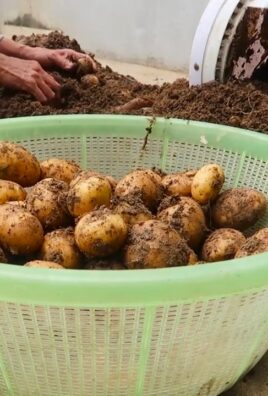
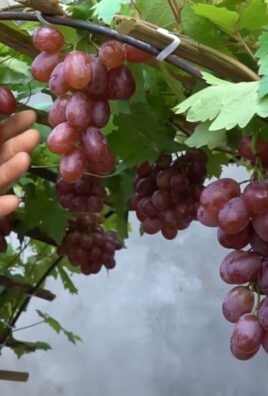
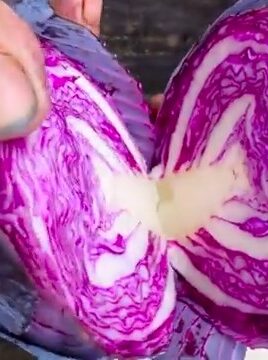
Leave a Comment